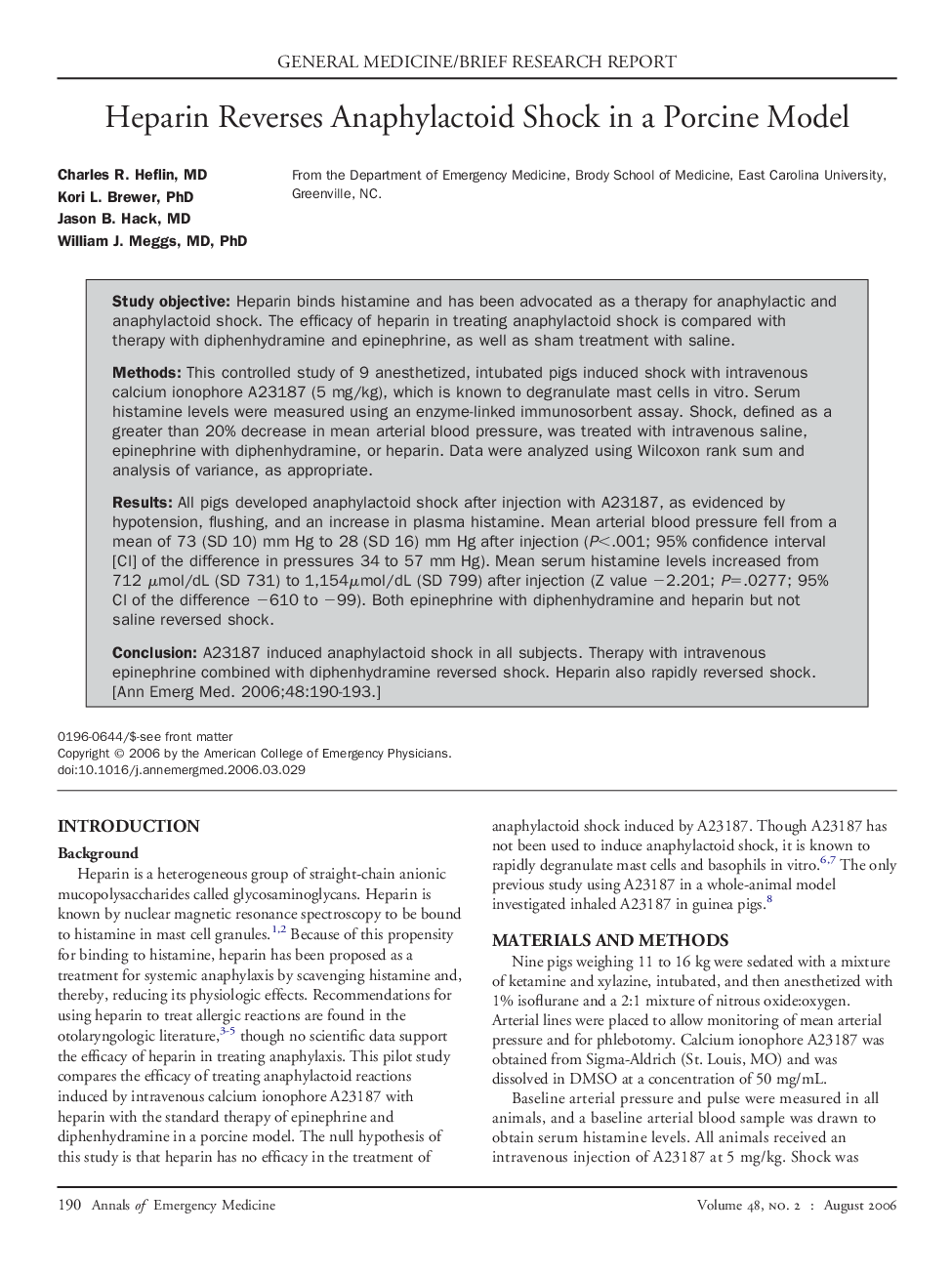| Article ID | Journal | Published Year | Pages | File Type |
|---|---|---|---|---|
| 3234463 | Annals of Emergency Medicine | 2006 | 4 Pages |
Study objectiveHeparin binds histamine and has been advocated as a therapy for anaphylactic and anaphylactoid shock. The efficacy of heparin in treating anaphylactoid shock is compared with therapy with diphenhydramine and epinephrine, as well as sham treatment with saline.MethodsThis controlled study of 9 anesthetized, intubated pigs induced shock with intravenous calcium ionophore A23187 (5 mg/kg), which is known to degranulate mast cells in vitro. Serum histamine levels were measured using an enzyme-linked immunosorbent assay. Shock, defined as a greater than 20% decrease in mean arterial blood pressure, was treated with intravenous saline, epinephrine with diphenhydramine, or heparin. Data were analyzed using Wilcoxon rank sum and analysis of variance, as appropriate.ResultsAll pigs developed anaphylactoid shock after injection with A23187, as evidenced by hypotension, flushing, and an increase in plasma histamine. Mean arterial blood pressure fell from a mean of 73 (SD 10) mm Hg to 28 (SD 16) mm Hg after injection (P<.001; 95% confidence interval [CI] of the difference in pressures 34 to 57 mm Hg). Mean serum histamine levels increased from 712 μmol/dL (SD 731) to 1,154μmol/dL (SD 799) after injection (Z value −2.201; P=.0277; 95% CI of the difference −610 to −99). Both epinephrine with diphenhydramine and heparin but not saline reversed shock.ConclusionA23187 induced anaphylactoid shock in all subjects. Therapy with intravenous epinephrine combined with diphenhydramine reversed shock. Heparin also rapidly reversed shock.
